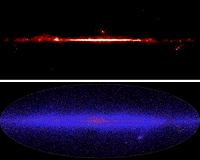 |
Waltham MA (SPX) May 18, 2010 Raytheon is proud to recognize the 50th anniversary of the laser and to celebrate the many innovations that emerged since Theodore Maiman of Hughes Research Labs developed the first working laser May 16, 1960. As part of the celebration, Raytheon hosted a dinner in El Segundo, Calif., Thursday to recognize employees and retirees from Raytheon and Hughes Aircraft Company who have been central to the company's laser innovation. Through its work with laser technology, Raytheon has improved the speed and precision of solutions that support a range of mission areas. Over the years, Raytheon has fielded thousands of laser designators and delivered tens of thousands laser systems, all while continuing to discover new opportunities to innovate with laser technology. Examples of laser innovation across Raytheon include: Adaptive Photonic Phase-Locked Elements - a DARPA development program at Raytheon: APPLE's goal is to develop a directed energy weapon that achieves high powers through beam combining. This high-power laser may be realized by combining multiple low-power beams into one single high-power beam. Raytheon's APPLE program focuses on enabling laser-based weapons applications to be integrated into unmanned aerial vehicles. Advanced Targeting Forward Looking Infrared: Laser technology enables Raytheon's ATFLIR to locate and designate targets at all times of day and at ranges exceeding 40 nautical miles. Beam Steering Technology Demonstration: The goal of the BSTD project is to develop optical communications for satellites that enable high-bandwidth communication to support warfighters, such as real-time sensor video. A specific objective is to provide gigabit communication to remote units, as opposed to the megabit communication that is currently possible. Directed Infrared Countermeasures: Raytheon uses laser technology to protect warfighters as part of a comprehensive aircraft protection system. Experimental Free Electron Laser: In June 2009, the Office of Naval Research awarded Raytheon a 12-month contract to develop the preliminary design of a 100 kilowatt experimental Free Electron Laser for the U.S. Navy that will also demonstrate parameters necessary to scale to a MW-class laser system. Laser Area Defense System: Part of a directed energy program, Raytheon LADS utilizes lasers to improve the precision and accuracy of the Phalanx system. Quantum Sensors: Raytheon BBN is participating in the DARPA-STO Quantum Sensors Program, which is exploring concepts for using quantum states in remote sensing applications. Successful development of such concepts would allow radar, laser radar and other remote sensing systems to exceed the performance limits of today's technology. "Raytheon's long history of technology innovation is evident in our many laser technology developments, which continue to this day. Over five decades, Raytheon delivered numerous laser technology firsts, and we're proud of our accomplishments in both developing lasers and in creating innovative solutions that apply laser technology," said Mark E. Russell, vice president of Engineering, Technology and Mission Assurance at Raytheon. "Across the organization, Raytheon engineers will continue to seek new opportunities to leverage the power of lasers in order to help protect warfighters and support customer missions."
Share This Article With Planet Earth
Related Links Raytheon Space Technology News - Applications and Research
 A And A Special Feature: Science With AKARI
A And A Special Feature: Science With AKARIWashington DC (SPX) May 05, 2010 This week, Astronomy and Astrophysics is publishing a special feature devoted to the new results obtained with the infrared satellite AKARI, a JAXA project with the participation of ESA. It includes 17 articles dealing with various subjects. Some papers are based on the AKARI all-sky survey, which has just been released. Others are dedicated to pointed observations of many astronomical targets f ... read more |
|
| The content herein, unless otherwise known to be public domain, are Copyright 1995-2010 - SpaceDaily. AFP and UPI Wire Stories are copyright Agence France-Presse and United Press International. ESA Portal Reports are copyright European Space Agency. All NASA sourced material is public domain. Additional copyrights may apply in whole or part to other bona fide parties. Advertising does not imply endorsement,agreement or approval of any opinions, statements or information provided by SpaceDaily on any Web page published or hosted by SpaceDaily. Privacy Statement |